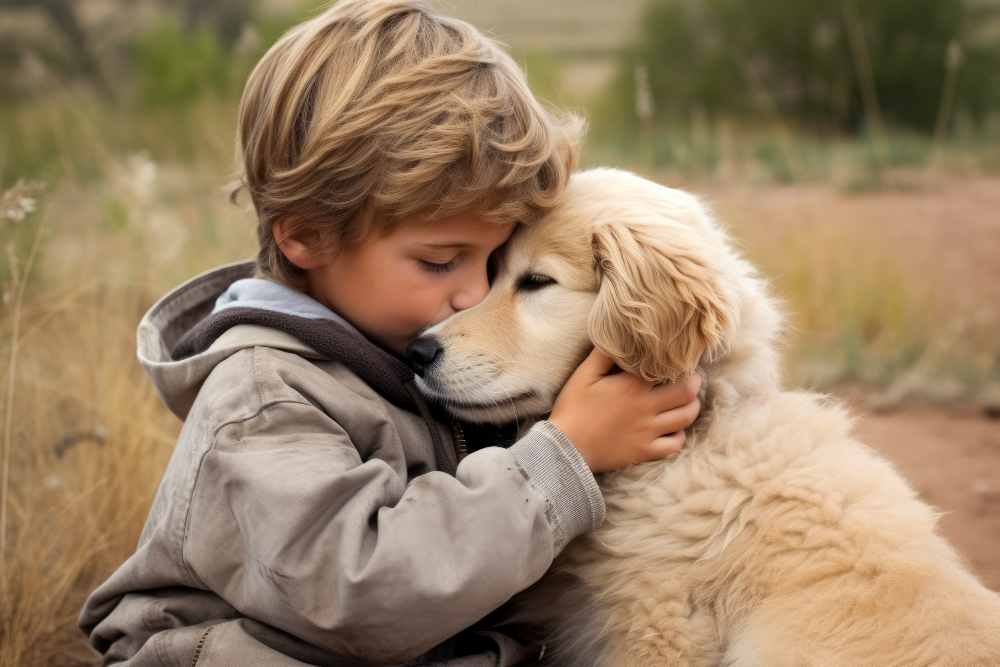How to Talk to Children About In-Home Pet Euthanasia

How to Talk to Children About In-Home Pet Euthanasia

Losing a beloved pet is one of life's most difficult experiences, especially when children are involved. The decision to pursue in-home euthanasia can provide a peaceful, comfortable farewell for your furry family member, but explaining this process to young minds requires careful thought and compassion.
Children form deep emotional bonds with their pets, often viewing them as siblings, confidants, and playmates. When the time comes to say goodbye, parents face the challenging task of helping their children understand and process this loss while maintaining honesty and providing comfort.
This guide offers practical advice for navigating these sensitive conversations, helping you support your child through this difficult transition while honoring the special relationship they shared with their pet.
Understanding Your Child's Developmental Stage
Before approaching the topic of pet euthanasia, consider your child's age and developmental understanding of death and loss.
Ages 3-5: Young children often view death as temporary or reversible. They may ask when their pet is coming back or expect them to wake up. Use simple, concrete language and avoid euphemisms that might confuse them.
Ages 6-9: School-age children begin to understand that death is permanent but may not fully grasp that it's universal. They often have many questions about what happens after death and may worry about other family members or pets dying.
Ages 10 and up: Older children and teenagers can understand the finality of death but may struggle with complex emotions like guilt, anger, or fear. They benefit from being included in decision-making processes when appropriate.
Preparing for the Conversation
Choose an appropriate time and setting for this important discussion. Find a quiet, comfortable space where you won't be interrupted. Consider having this conversation when your child is well-rested and emotionally stable.
Gather your thoughts beforehand and prepare for difficult questions. Children often ask direct questions about the process, what happens to their pet's body, and whether their pet will feel pain. Having thoughtful answers ready helps you respond calmly and confidently.
Consider involving other family members or trusted adults who were close to your pet. Sometimes children feel more comfortable expressing their emotions to different people, and having multiple sources of support can be beneficial.
Explaining In-Home Euthanasia
When discussing in-home euthanasia, emphasize the compassionate aspects of this choice. Explain that this option allows your pet to remain in familiar surroundings, surrounded by the people who love them most.
Use age-appropriate language to describe the process. You might say, "The veterinarian will give [pet's name] a special medicine that will help them go to sleep peacefully and without any pain. They won't wake up from this sleep, but they won't hurt anymore either."
Be honest about what will happen while avoiding unnecessarily frightening details. Children need to understand that their pet will die, but they don't need graphic descriptions of the medical procedures involved.
Address common concerns children might have. Many worry that their pet will be scared or that they somehow caused their pet's illness. Reassure them that pets surrounded by loving family members feel safe and comforted, and that illness is never anyone's fault.
Addressing Common Questions and Concerns
Children often ask whether their pet will feel pain during the process. Explain that veterinarians use medicine specifically designed to prevent suffering, and that in-home euthanasia allows pets to remain calm and comfortable in familiar surroundings.
If your child asks about what happens to their pet's body afterward, provide honest but gentle explanations about burial or cremation options. Some families choose to bury their pet in the backyard or at a pet cemetery, while others prefer cremation and keeping the ashes in a special urn.
Many children worry about whether they did something wrong or could have prevented their pet's death. Reassure them that pets get sick or old just like people do, and that loving care cannot always prevent death. Emphasize all the ways they helped their pet live a happy life.
Supporting Your Child Through the Process
Consider whether your child should be present during the in-home euthanasia. Some children find comfort in being able to say goodbye, while others prefer to remember their pet while they were still alive. There's no right or wrong choice—follow your child's preferences and your instincts as a parent.
If your child chooses to be present, prepare them for what they'll see. Explain that their pet will become very relaxed and sleepy, and that their breathing will slow down and eventually stop. Let them know it's okay to pet their animal, talk to them, or simply sit nearby.
Create opportunities for your child to participate in meaningful ways. They might want to help prepare their pet's favorite blanket, choose special treats for a final meal, or write a letter expressing their feelings.
Helping Children Process Grief
Grief looks different for every child, and there's no standard timeline for healing. Some children may seem unaffected initially, while others might experience intense sadness, anger, or confusion. All of these responses are normal and valid.
Encourage your child to express their emotions through various outlets. Drawing pictures, writing stories, creating photo albums, or building memorial gardens can help children process their feelings and create lasting tributes to their pet's memory.
Maintain routines as much as possible while allowing extra flexibility for emotional needs. Children may need more comfort, attention, or patience during this difficult time.
Watch for signs that your child might benefit from additional support. If grief significantly interferes with sleep, eating, school performance, or social activities for an extended period, consider consulting with a counselor who specializes in childhood grief.
Creating Lasting Memories
Help your child find ways to honor their pet's memory and celebrate the joy they brought to your family. Look through photos together and share favorite memories about funny habits, special tricks, or memorable adventures.
Consider creating a memorial project together. This might include planting a tree, making a photo collage, assembling a memory box with your pet's favorite toys, or donating to an animal shelter in their honor.
Some families find comfort in rituals like lighting a candle on special dates, visiting places their pet enjoyed, or sharing stories about them during family gatherings. These activities help keep positive memories alive while acknowledging the sadness of loss.
Moving Forward with Hope
While the pain of losing a beloved pet never completely disappears, most children gradually adjust to life without their furry friend. They learn to cherish happy memories while accepting that their pet is no longer physically present.
Some families eventually welcome a new pet into their home, while others prefer to wait or decide against getting another animal. There's no rush to make these decisions, and it's important to respect everyone's feelings about the possibility of another pet.
Use this experience as an opportunity to help your child develop resilience and coping skills they'll carry throughout life. Learning to navigate loss with support and love builds emotional strength and empathy.
Finding Professional Support in Your Community
If you're considering in-home euthanasia in Reno, NV, contact Rover Veterinary Care today for more information. Professional veterinary teams understand the emotional complexity of these situations and can provide guidance for both you and your children during this difficult time.
Many communities also offer pet loss support groups, children's grief counseling, and resources specifically designed to help families cope with animal death. Don't hesitate to reach out for professional support if you feel overwhelmed or if your child is struggling significantly.
